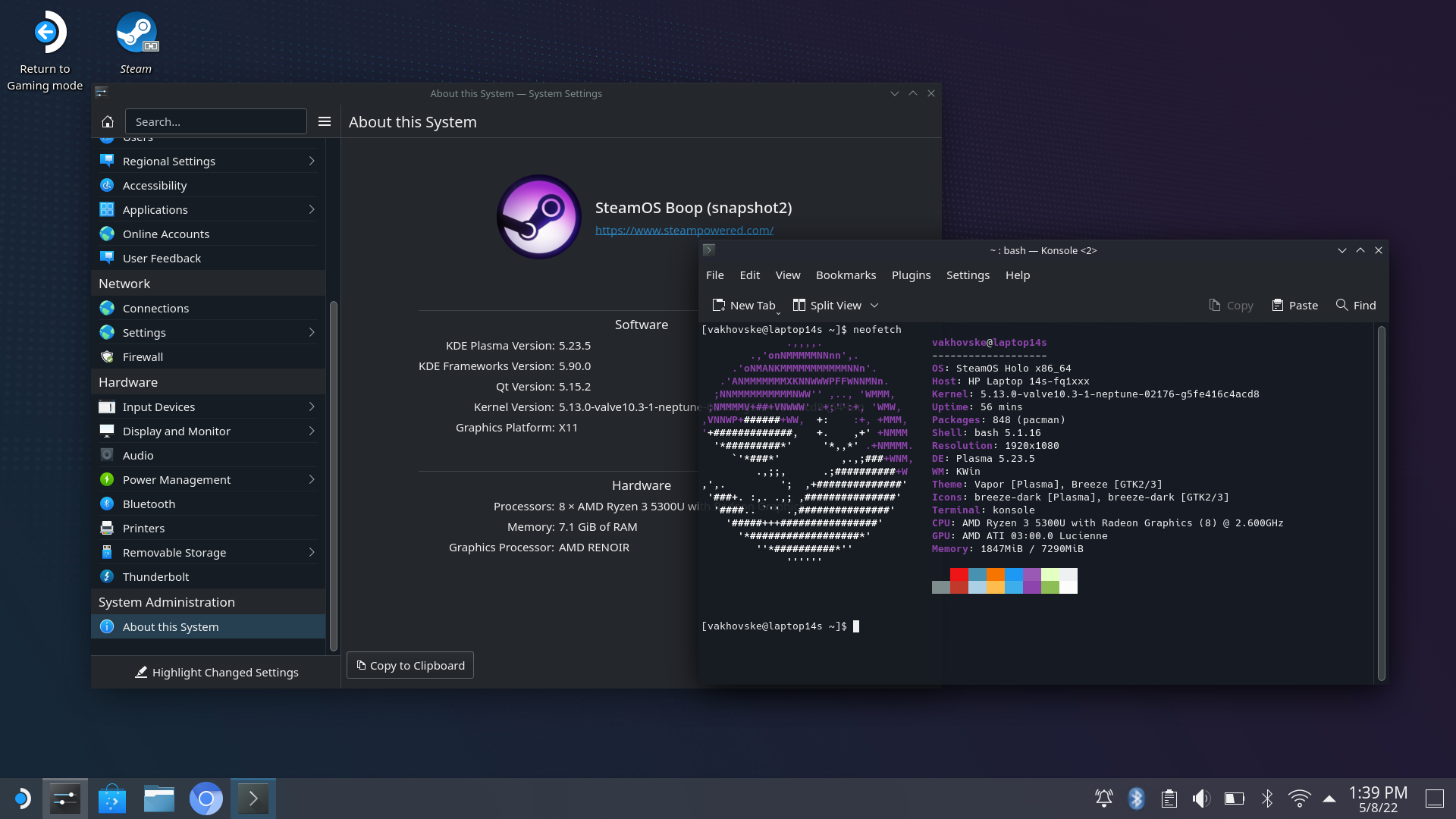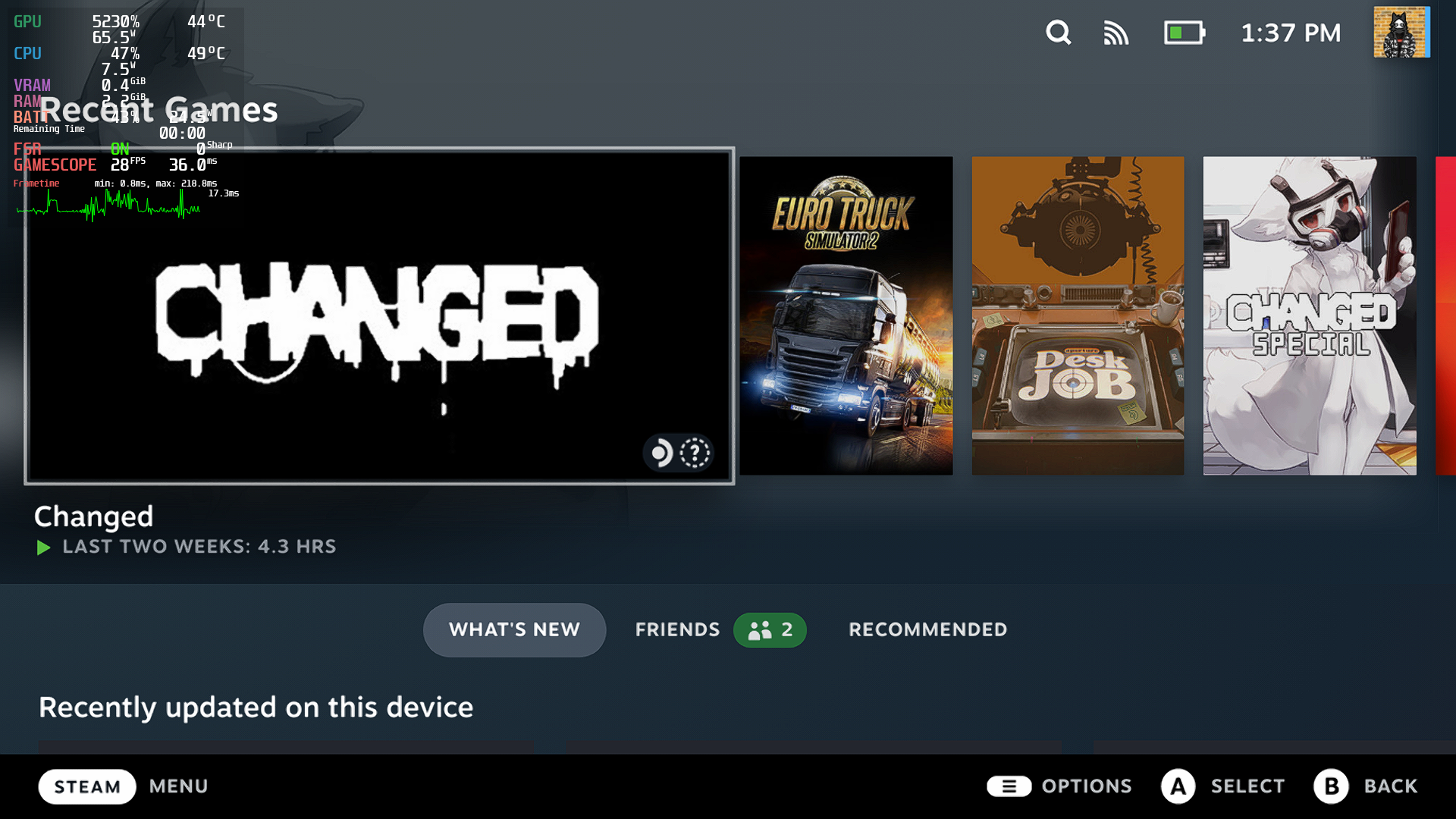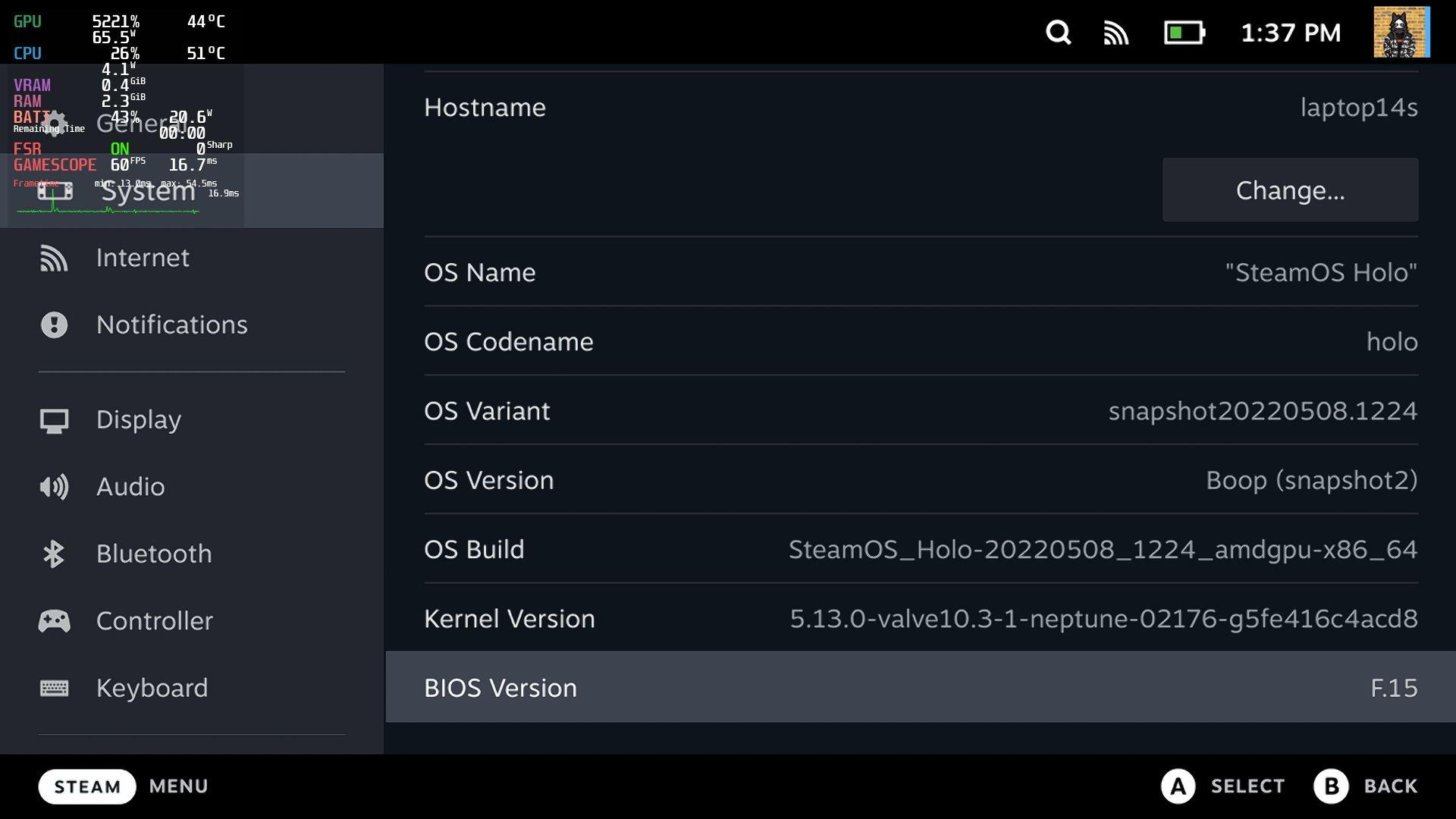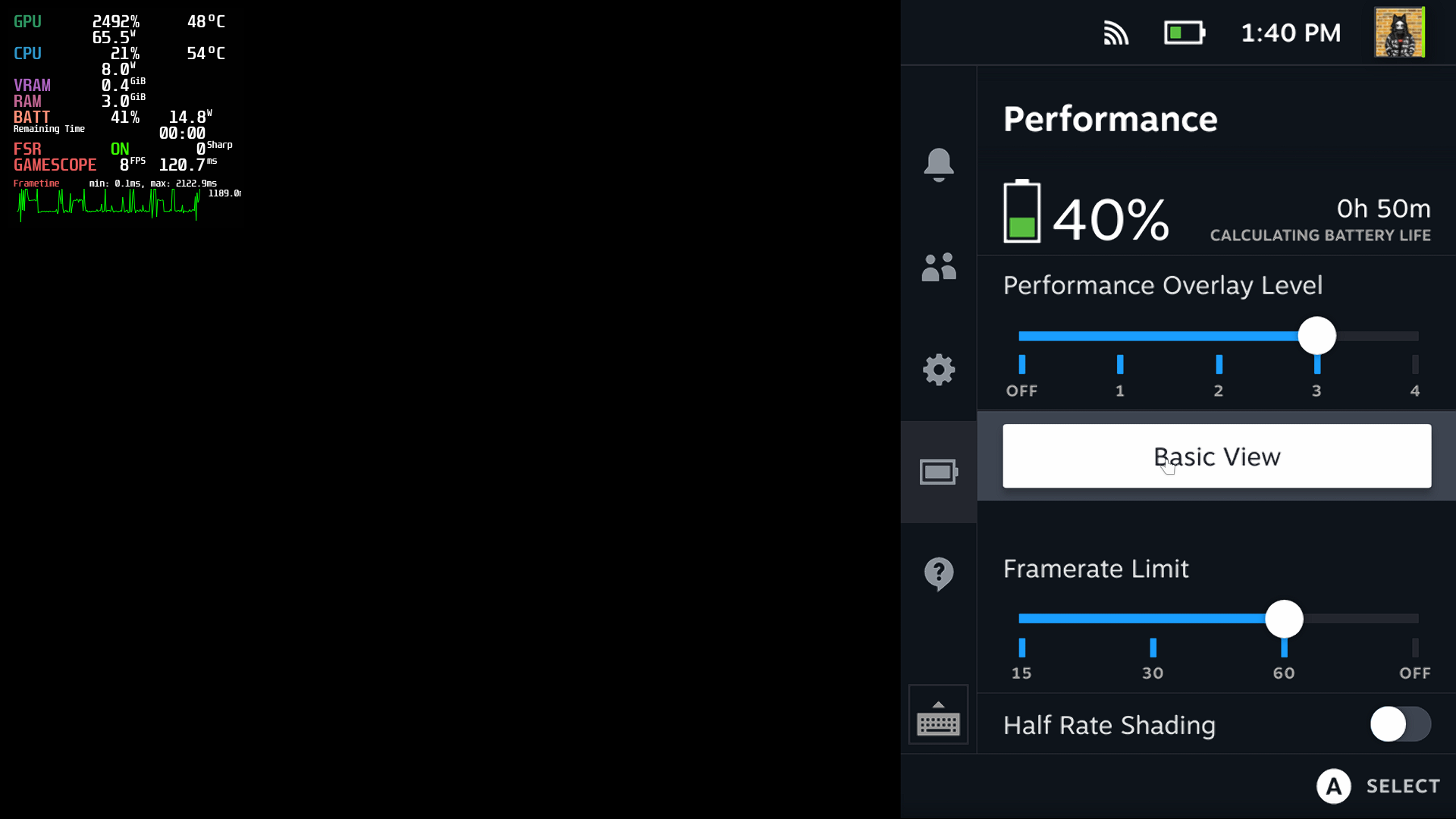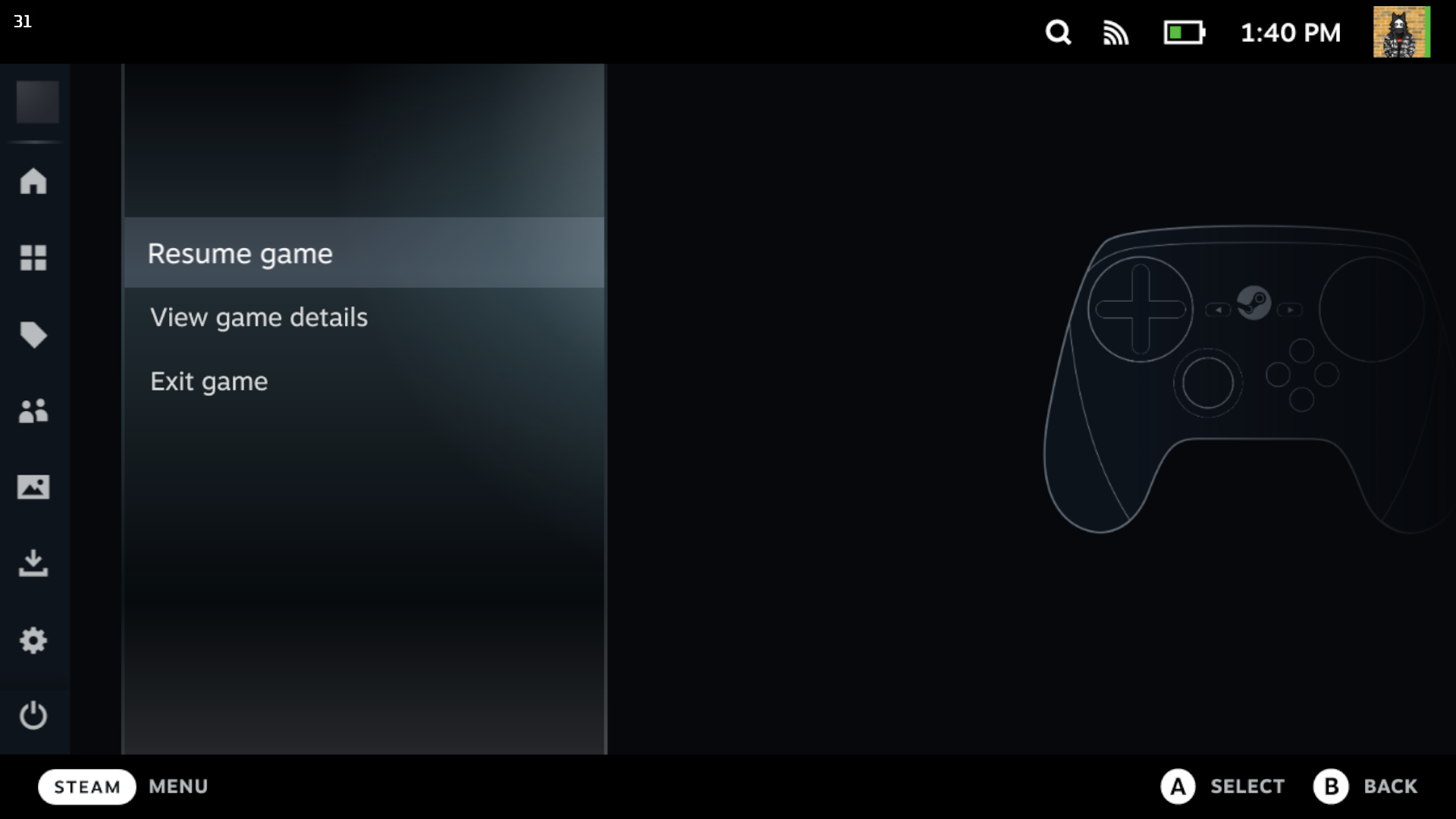First of all i want to credit Adam Jafarov for creating the HoloISO project! So please go check him out.
Note: I am not in any way affiliated with Adam Jafarov.
This is not a competition of "Who makes the better HoloISO?" or something like that.
I just like the project he made and saw some things that didn't work for me or i'd like to see changed.
So i changed some things and made them public, because it might help someone.
There is no bad blood between us.
SteamOS 3 (Holo) archiso configuration.
Yes, Gabe. SteamOS functions well on a toaster.
This project attempts to bring the Steam Deck's SteamOS Holo redistribution into a generic, installable format, and provide a close-to-official SteamOS experience. Main point of this project focuses in re-implementing proprietary (as in runs-only-on-deck) components that Steam client, OS itself, gamescope and user-created applications for Deck rely on and making me learn Linux in a fun and unique way.
Click here to join HoloISO Telegram update channel;
Click here to visit HoloISO discussion on Steam Deck Community forums
Common Questions
- Is this official?
No, but it may as well be 99% of the way there. The code and packages, are straight from Valve, with zero possible edits, and the ISO is being built same rootfs bootstrap as all HoloISO installations run
- I have an NVIDIA GPU
It may not be perfect but it works. For a better experiece go to the desktop, then to the steam settings and under interface make sure you have GPU acceleration for web views and hardware video decoding set to enabled
Working stuff:
- Bootup
- SteamOS OOBE (Steam Deck UI First Boot Experience)
- Deck UI (separate session)
- Deck UI (-gamepadui)
TDP/FPS limiting(*0)- Global FSR
- Shader Pre-Caching
- Switch to Desktop from plasma/to plasma without user interference.
- Valve's exclusive Vapor appearance for KDE Plasma
- Steam Deck pacman mirrors
- Cool-looking neofetch?
- System updates
Working stuff on Steam Deck compared to other distributions:
- Dock Firmware updater (additionally installable in desktop by running sudo pacman -S jupiter-dock-updater-bin)
- Steam Deck BIOS, Controller firmware, OS firmware updater
- New fan curve control
- TDP/Clock control
(*0) Disabled for ALL systems except for Steam Deck (Valve Jupiter 1) due to VERY LOW hardcoded TDP/Clock values, especially for dGPUs.
Prerequistes:
- 4GB flash drive
- More than 8 GB RAM if you plan to use "Copy-To-RAM" option to install
- AMD GPU that supports RADV Drivers instead of Radeon (Southern Islands and Sea Islands require additional kernel cmdline property) or
Intel GPUs should work, but this needs testing or
Nvidia 900 series and up - UEFI-enabled device
- Disabled secure boot
Installation:
- Flash the ISO from releases using BalenaEtcher, Rufus with DD mode, or by typing
sudo dd if=SteamOS.iso of=/dev/sd(your flash drive) bs=4M status=progress oflag=syncin the terminal, or by simply throwing the ISO onto a Ventoy drive - Boot into ISO
- Click on "Install SteamOS on this device"
- Follow on-screen instructions
- Take your favourite hot beverage, and wait 'till it installs :3
Upon booting, you'll be greeted with Steam Deck's OOBE screen, from where you'll connect to your network, and login to your Steam account, from there, you can exit to KDE Plasma seamlessly by choosing Switch to desktop in the power menu, like so.
Updating:
- For regular updates you would just hit the update button in gamemode or type
sudo steamos-update check && sudo steamos-update nowin the terminal - For ISO updates you would just download the new ISO and install to the same disk HoloISO is already on. The installer will detect an existing installation and asks you if you want to keep/reuse your home partition (This is where all your games, steam, various configs and personal files are stored). No data loss occurs then. Only the packages you installed via "pacman" from the terminal or the discover store get lost (but not their configuration or user data).
This configuration includes Valve's pacman.conf repositories, holoinstall script and holoinstall post-installation binaries.
This configuration builds a releng-based ISO, which is the default Arch Linux redistribution flavor.
Trigger the build by executing:
sudo pacman -S archiso
git clone https://github.com/zweiler2/HoloISO_Tweaked.git
sudo mv ./HoloISO_Tweaked/mkarchiso-holoiso /usr/bin
sudo chmod +x /usr/bin/mkarchiso-holoiso
sudo mkarchiso-holoiso -v ./HoloISO_Tweaked
sudo chown -hR $USER:$USER ./out
Once it finishes, your ISO will be available in the out folder.
Adam Jafarov
Ewan for providing his build/fileserver
fewtarius
LeddaZ
danyi
mnixry
wynn1212
TwinniDev
Pato05
maade69
huangsijun17
wordlesswind
NightHammer1000
kubo6472
ItsVixano
pants4hire
Lolihunter1337
cpyarger
Etienne Juvigny and all contributors who made the Nvidia driver AIO Installer
Stephen and all contributors who made the Nvidia vaapi driver
Severin and all contributors who made the Xbox One and Xbox Series X|S accessories linux kernel driver

